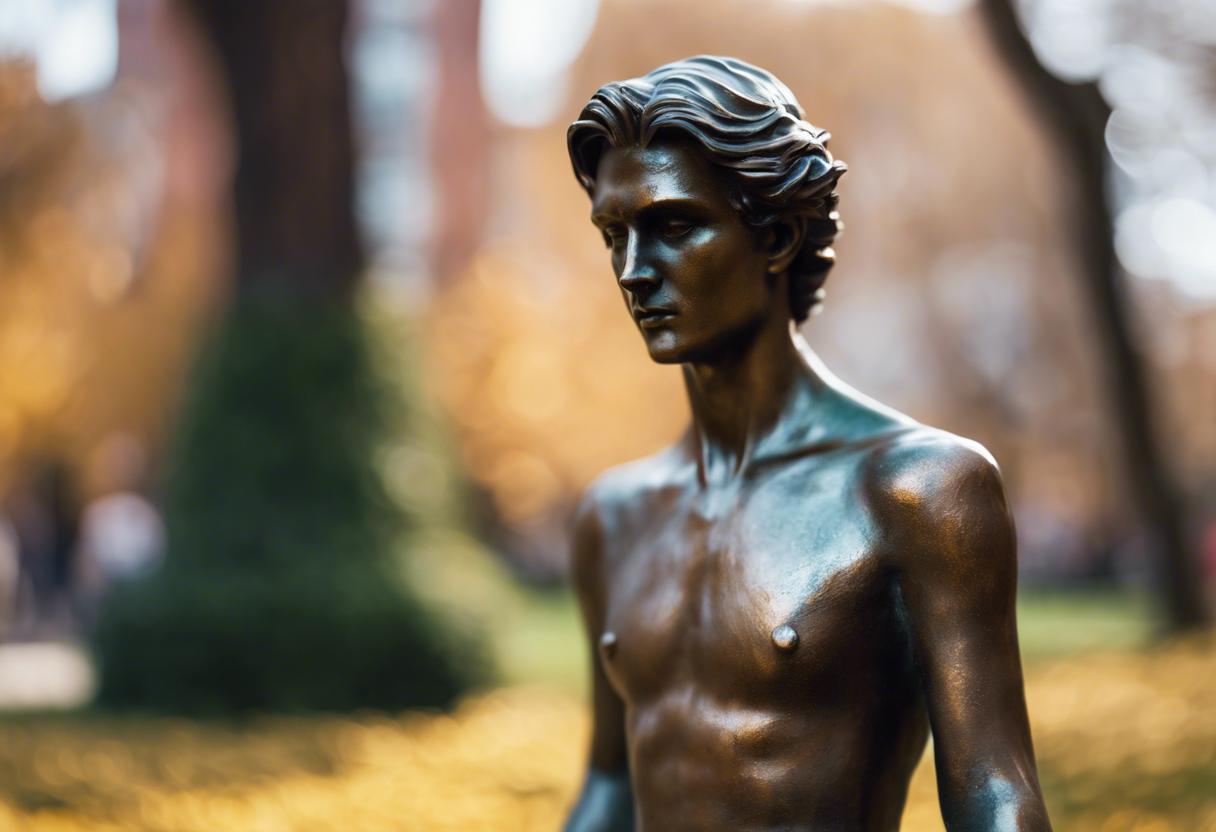The recently revealed bronze statue of Queen Elizabeth II in Antrim Castle Gardens, Northern Ireland, has attracted criticism and ridicule. Some even demanded its dismantling, branding it an affront to the memory of the late queen. The critics argue that its portrayal, including the face form, stance, and wellington boots, attributes a derogatory resemblance to Mrs Doubtfire, a cross-dressed character from a 1993 film.
Despite the mockery flooding in soon after the unveiling last Friday, the instigators, Antrim and Newtownabbey borough council, remain satisfied with the local artist Anto Brennan’s handiwork. According to them, the sculpture gracefully encapsulates the queen’s lifelong commitment to service, her steadfast manner, and her noble aura.
In an effort to depict the late queen’s affection for outdoor life and her pet canines, the statue was installed next to her late husband, Prince Philip, and two bronze corgis. The mayor, Neil Kelly, believes the monument serves as an enduring representation of the queen’s resilience, her unifying impact across generations, and her dedication to public duty.
However, the majority of comments on the council’s Facebook page beg to differ, denouncing the statue as a mistake. A few posters suggested that those responsible for approving the installation should personally bear its costs. Others expressed their doubt that the beloved queen would have wished for her likeness to be eternalized wearing wellington boots.
There were speculations that the artist responsible for the disputed bust of Cristiano Ronaldo at Madeira airport in 2017 might be the same one who carried out the recent council commission. Cases similar to this have included contentious works such as the “frightening” statue of Lucille Ball in New York and Michael Jackson’s statue at Fulham football club, both of which were subsequently removed.
A wave of online criticism left Brennan, a sculptor famed for his chess-piece style representations of Northern Ireland’s politicians, in its wake. One individual expressed regret that people were quick to fault the artworks without considering the dedication and hard work that goes into creating them.
The comment section under the council’s Facebook announcement of the unveiling seemed to be disabled. Antrim and Newtownabbey representative, Vera McWilliam, acknowledged to the BBC that the statue hardly looked like the queen.
Reacting to the statue’s reception, the council accepted that art often elicits a range of opinions, but affirmed it was pleased with the mainly positive feedback. The authority noted that social media tends to amplify certain adverse comments.
DUP representative John Smyth, who was present at the unveiling, stated that nothing could be done about the statue at this point. He recalled his involvement in the Duke of Edinburgh’s statue, stating that they had the opportunity to see the mould and the planned image before completion. While they were content with the end result, he admitted that alterations were made to the uniform to display more country affiliations rather than military.
Smyth conceded that any modifications at this stage would be costly and predicted people would move on from the controversy in a matter of weeks.

